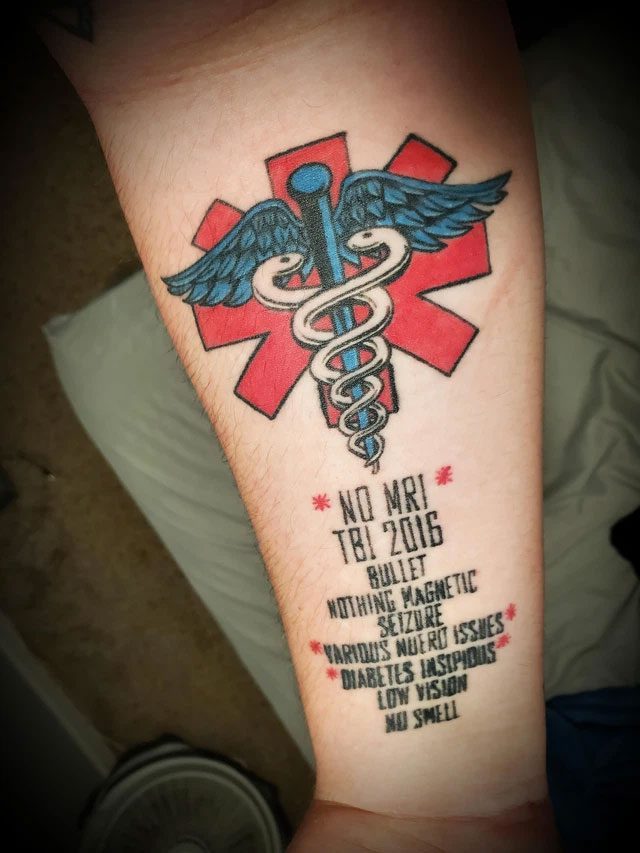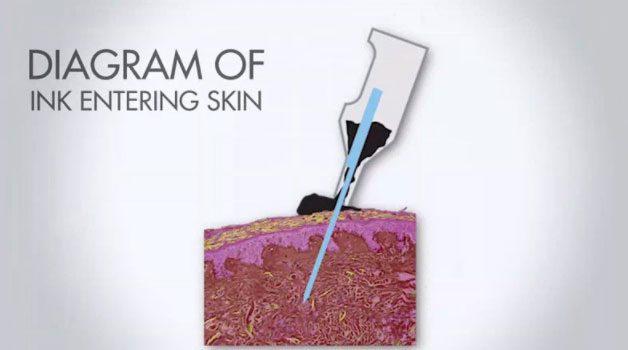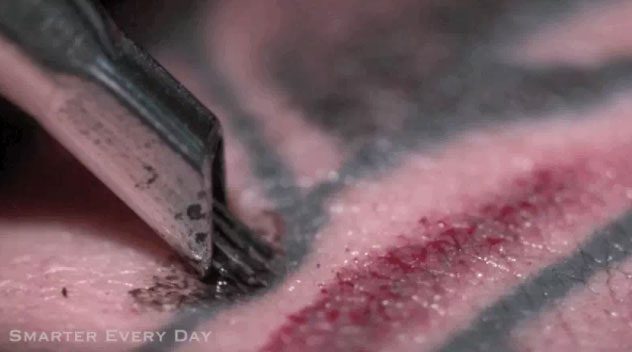Tattoos have faced a lot of prejudice in the past. They were once a marker for identifying criminals and those living outside the law. Over time, tattoos became a trendy fashion statement in the rock and hip-hop communities. At that time, tattoos represented a declaration of individuality and strength among the youth.
However, in the last five years, tattoos have become mainstream across all social classes and age groups. As people reveal more skin, they also enjoy adorning their bodies with artistic designs.
Even children have shown an interest in tattoos, with parents allowing them to use temporary tattoo stickers.

In recent years, tattoos have become mainstream across all social classes and age groups.
But the story doesn’t stop there. Doctors and biochemical engineers are now looking to elevate tattoos to a new level, in a field they refer to as “medical tattoo” or medical tattoos.
Many researchers have begun to wonder: Can tattoos help us heal?
Replacing needles with tattoo needles
This is the idea of Idera Lawal, a biochemical engineer specializing in fluid dynamics and needle-free subcutaneous injection methods at Texas Tech University in the United States.
Lawal explains that when you get a tattoo, the needles puncture your skin at a rate of 200 times per second. Contrary to what many believe, tattoo needles injecting ink into the skin operate differently from vaccine needles.
Firstly, medical syringes are hollow, while tattoo needles are solid. The operation of a medical syringe relies on positive pressure. Doctors or nurses push the hollow needle through your skin and then press down on the syringe’s plunger to force liquid medication into your body. Throughout this process, the needle remains completely still.
Tattoo needles, on the other hand, are solid and only coated with ink on the outside. They continuously puncture your skin. Each time a needle is pressed down and pulled up, it leaves a hollow hole about 2 mm deep. The ink then flows into this hole without the need for positive pressure.
The way tattoo needles inject ink into the skin (Idera Lawal, Texas Tech University)
Lawal recorded a slow-motion video demonstrating the effect, showing that the vacuum in the opening of the tattoo needle draws the ink down without requiring pressure. He stated that this effect could potentially be used to distribute drugs and vaccines more effectively than medical syringes in some cases.
“Over the past decade, several studies have highlighted the potential of using tattoo needles as a drug delivery technique into the skin. However, we still lack understanding of the fluid dynamics involved in the process of delivering fluids into the skin“, Lawal wrote in a recent report at a conference of the American Physical Society.
“Based on our observations, we hypothesize a delivery mechanism based on capillary infiltration“.
Storing drugs or vaccines in the skin to allow them to gradually absorb into the capillaries is a slow and subtle distribution strategy. Lawal notes that in some cases, conventional medical syringes may not be effective.
For example, DNA vaccines are often too large and may struggle to pass through standard needles. Lawal believes that instead of injecting, tattooing this type of vaccine into the body would be more effective.

If you can tattoo ink into the skin, why not with drugs and vaccines?
And cases that can only be treated with tattoos
A prime example is Leishmaniasis. This is a parasitic disease transmitted by mosquitoes, characterized by non-healing skin ulcers. There are about 12 million Leishmaniasis patients worldwide, but treatments have not proven effective.
Although researchers have discovered a drug that inhibits and kills the Leishmania parasite, distributing it remains a challenge. If applied topically, this drug may not be effectively absorbed in many cases.
If injected directly into the lesions, it can cause pain, and patients may need multiple injections. Additionally, injectable Leishmania drugs cannot be applied in cases of ulcerative lesions in lymph nodes or around cartilage.
In this context, Marina Temi Shio, a researcher at the Department of Microbiology and Immunology at McGill University Health Centre, suggested that the Leishmania drug should be tattooed onto the lesions, similar to a regular tattoo.
“Tattooing is a powerful, easy-to-use, completely hygienic intervention that has been developed and refined by the aesthetic industry over decades“, Shio and the research team wrote in the journal Scientific Reports.

Directly delivered by tattoo needles into the dermis, the drug was absorbed more effectively than topical application.
In reported trials, they successfully treated mice infected with Leishmania using tattooing methods. By being directly delivered by tattoo needles into the dermis, the drug was absorbed more effectively than when applied topically.
Meanwhile, with prolonged storage, the mice did not need to be injected multiple times and saved doses ranging from 6 to 16 times compared to the technique of injecting with medical needles into the peritoneum.
“The idea of therapeutic tattooing is not new; it dates back to 3,300 B.C. when archaeologists discovered 57 tattoos (from ancient mummies) believed to have therapeutic purposes“, Shio wrote in the study.
“However, this report marks the first time tattooing techniques have been implemented as a form of drug delivery. If proven beneficial, tattooing could become a therapeutic intervention for many diseases, from psoriasis and skin cancer to other infections”.


















































